Abstract
Electrophoretic studies of genetic variation in 14 species of terrestrial slugs of the families Arionidae, Philomycidae, and Limacidae in the eastern United States indicate that self-fertilization, either facultative or obligatory, is the normal breeding system in six of the species. Three of these six species are single monogenic strains; one consists of three monogenic strains; one includes a highly heterozygous form and two monogenic strains; and one has a moderate amount of polymorphism but little heterozygosity and strong linkage disequilibrium. Eight species are outcrossers, being highly polymorphic and panmictic within local populations. Niche breadth, assessed in terms of extent of geographic distribution and variety of habitats occupied and measured on an experimental plot of woodland, is greater in some monogenic strains than in highly heterozygous, outcrossing species. Colonizing success apparently is independent of the amount of genetic variation carried by a species.
Keywords: breeding systems, hermaphroditic molluses, colonization, general-purpose genotypes
Full text
PDF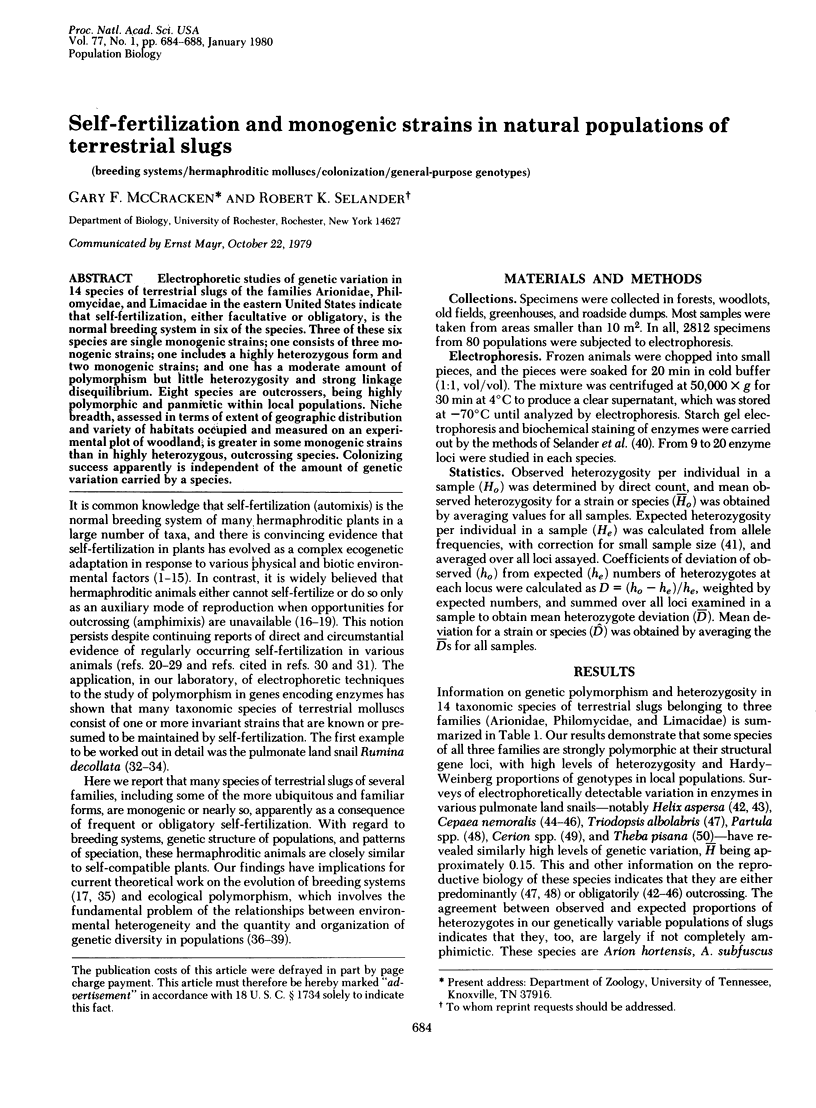
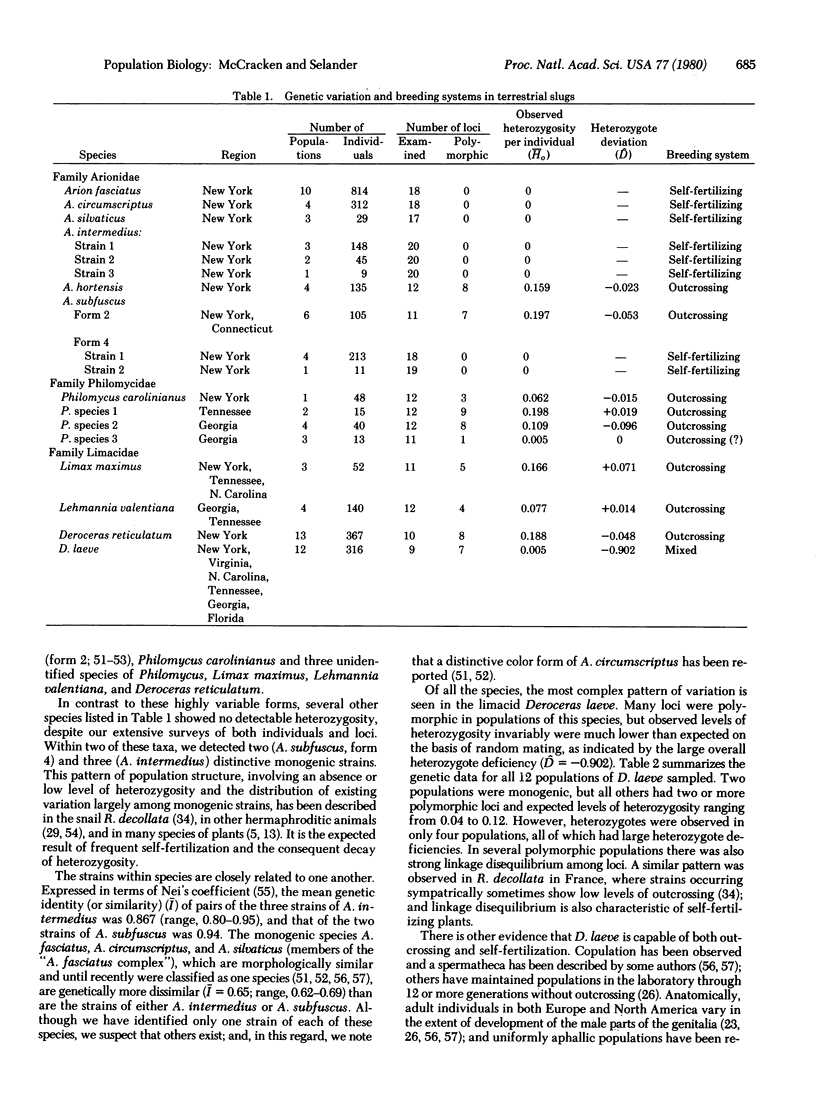
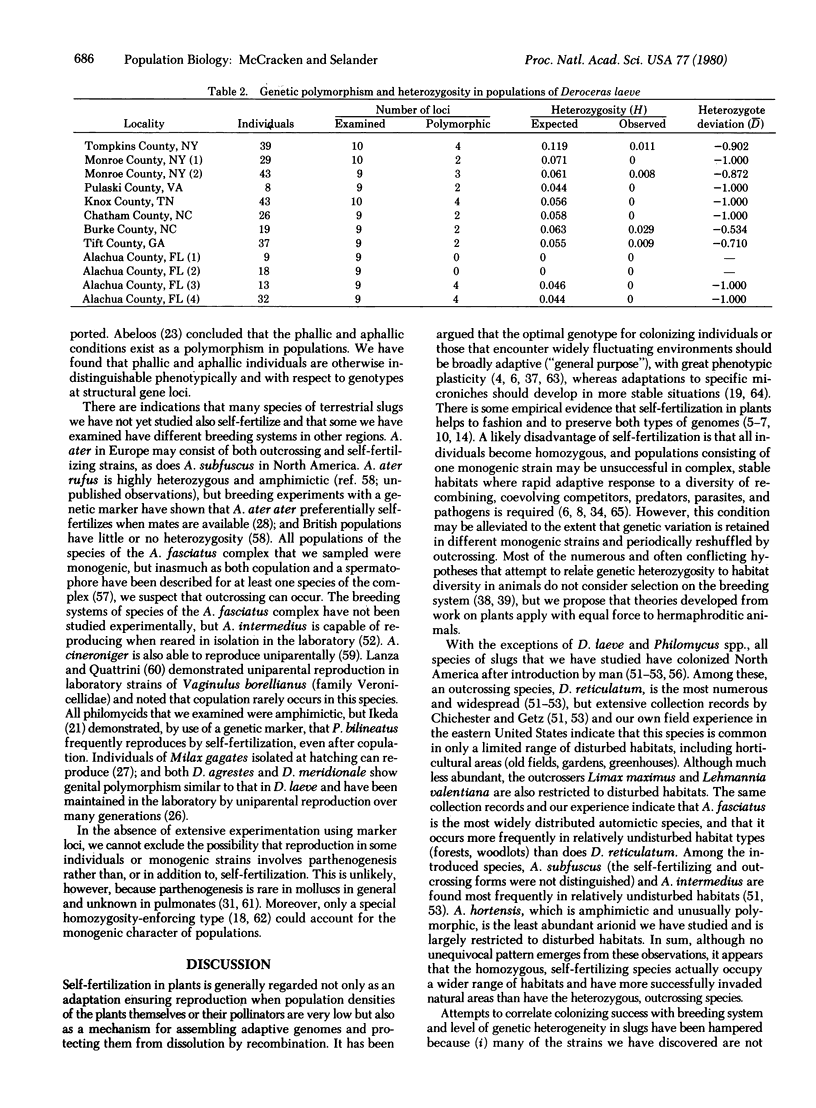
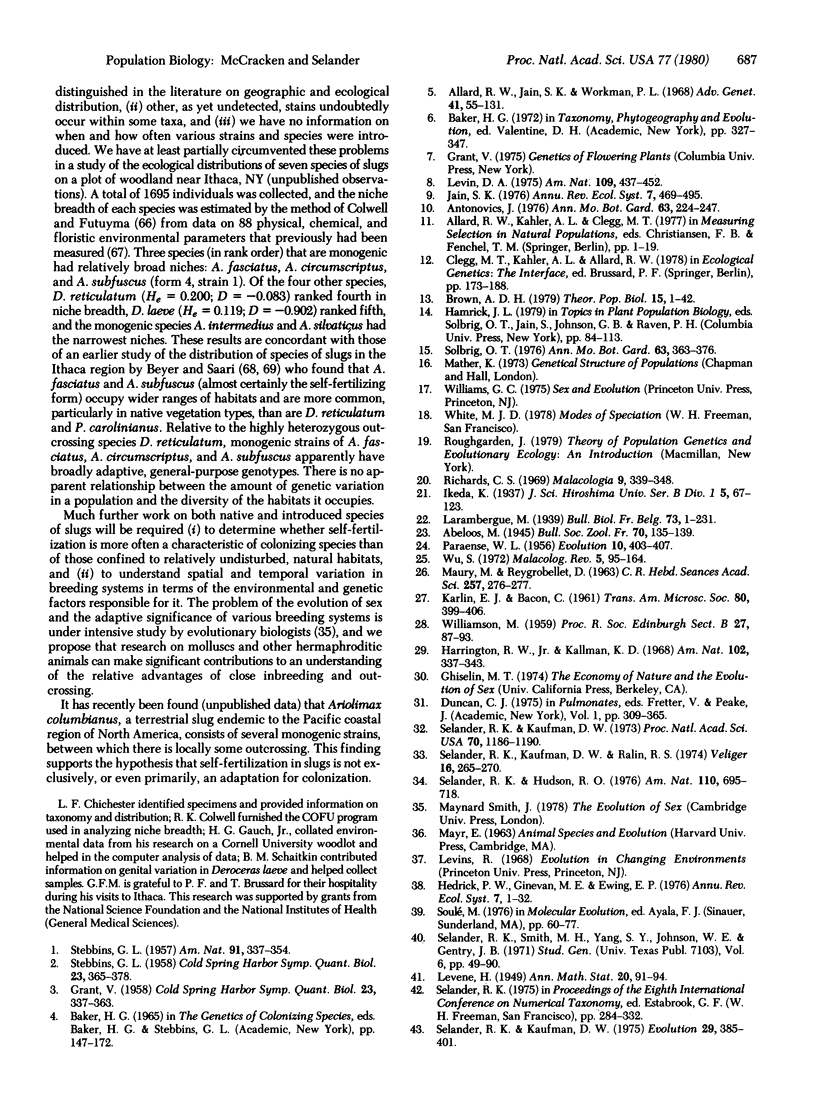
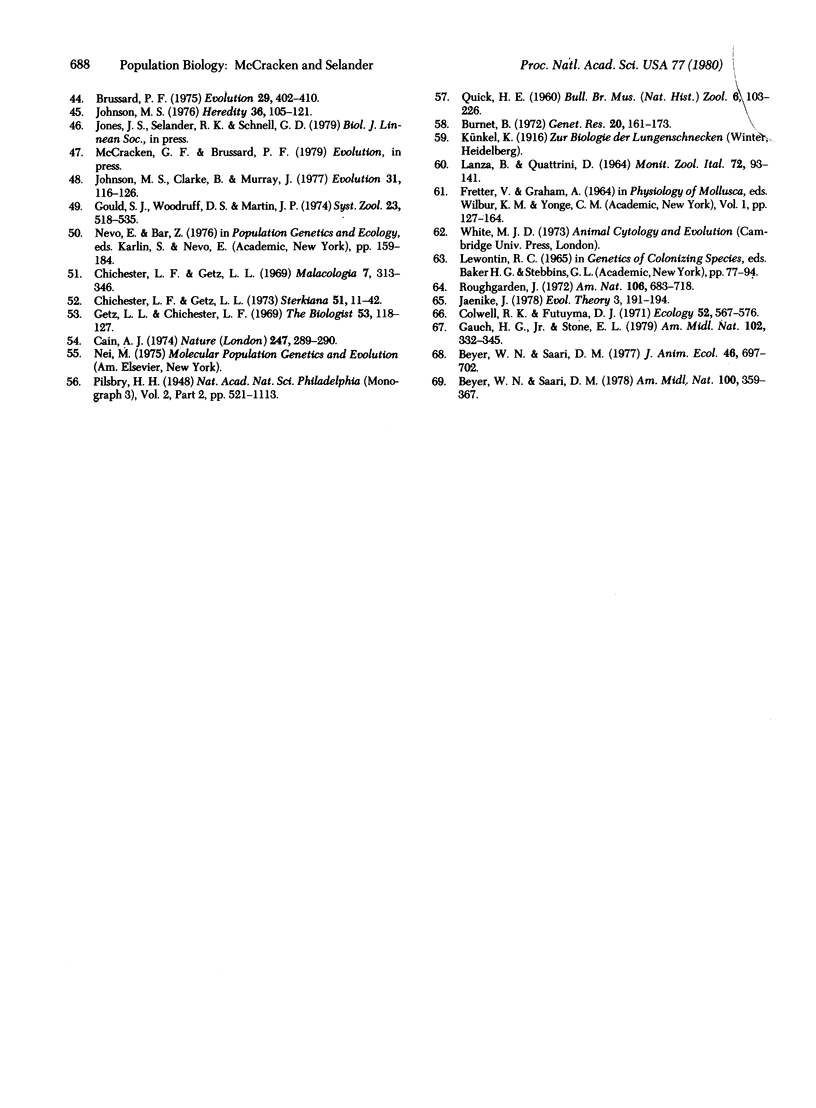
Selected References
These references are in PubMed. This may not be the complete list of references from this article.
- GRANT V. The regulation of recombination in plants. Cold Spring Harb Symp Quant Biol. 1958;23:337–363. doi: 10.1101/sqb.1958.023.01.034. [DOI] [PubMed] [Google Scholar]
- STEBBINS G. L. Longevity, habitat. and release of genetic variability in the higher plants. Cold Spring Harb Symp Quant Biol. 1958;23:365–378. doi: 10.1101/sqb.1958.023.01.035. [DOI] [PubMed] [Google Scholar]
- Selander R. K., Kaufman D. W. Self-fertilization and genetic population structure in a colonizing land snail. Proc Natl Acad Sci U S A. 1973 Apr;70(4):1186–1190. doi: 10.1073/pnas.70.4.1186. [DOI] [PMC free article] [PubMed] [Google Scholar]


